During the heights of the Bronze Age, Troy relished its golden ages when it had the power, also thanks to its location controlling the trade routes. After the Trojan War, the city was deserted till 700 BCE when Greeks settled the Troas region.
Alexander the Great (descendant of Achilles), who was on his way to conquer Asia, also stopped by the glorious city to honor the heroes and governed the area around the 4th century BCE. This visit was rather romantic and more of a personal one where he switched his armor with that of Achilles.
Named as New (Sacred) Ilium, Romans ruled the area from 85 BCE, and the city had glorious times again thanks to the belief of the Aeneas, one of the heroes of Troia, and considered as the ancestor of Romulus and Remus (the founders of Rome). This legendary was turned into a great marketing, and Troy, even back then, became a popular destination for tourism and pilgrimage.
As Constantinople flourished, the city lost its importance, and many assumed that it was just a mythical place invented by Homer before the self-proclaimed archeologist, Heinrich Schliemann, demonstrated its presence. Archeological excavations are still ongoing, so the ancient city is still visible, and it has a great deal to teach the world.
The legend tells us that the sea goddess Tethys and the Titan of the Atlantic Sea, Oceanus had a beautiful daughter named Electra. She would become the wife of Zeus later and would bring Dardanus to the world. The son of Dardanus founded the city- later called Troad, and his son, named Ilus, would establish the city of Troy.
The Mount Ida (Kaz Dagi) rising above the city was home to the first beauty contest, of which candidates were Hera, Athena, and Aphrodite. Paris, the judge of this beauty contest, chose Aphrodite, and he was promised the love of Helen, the beautiful queen of Menelaus, the king of Sparta. Eventually, Paris abducted the beautiful queen from Mycenae and brought her to his homeland, to the castle of his father, King Priam.
As a result, the brother of Agamemnon, who is the king of Mycenae, loaded his army along with a vast list of Achaean troops and landed on the shores of the city to start the legendary war that would turn into ten years of besieging. While thousands lost their lives in the war, the idea of Odysseus, pretending to abort the siege, Epeius building the massive Trojan Horse, and leave it at the shores of the city. The warnings of Cassandra (the daughter of Priam) did not result in good, and the horse was taken into the fortified walls with celebrations considering it as a present of Athena.
Later in the night, the Greek fleet came back, and the army hiding inside the horse opened the gates to the Greek troops, and at the end of the night, the whole city was burned and destroyed. The sons of King Priam’s were killed with all the other men, while women were taken to Greece as slaves to be traded in different cities.
It is not precisely known when Homer wrote this great epic. Some believe it was right after the war, around the 12th century BCE, and some believe it was even earlier, around the 9th century BCE.
So, while there is no firm evidence of all these happenings or the other speculations about the history, there is still a piece of evidence supported by the bronze arrowheads and fire-damaged bodies found around the archeological site.
In summary, Trojan Horse might be a myth, but the city and more than one war are real!
Also Read: Historical Fact or Fiction: Did the Trojan War Actually Happen?
Hittites’ capital, Hattusa, located in today’s Bogazkale in central Turkey, was quite far from Troy. The tablets found at this capital and the ones in Egypt have mentions of a mighty city near Dardanelles named Wilusa (Greek: Ilios) reigned by a king named “Alaksandu” or Alexandros, birthname of Paris, the Trojan prince.
According to the vessels found on the site, these lands were under the Hittite rule or at least had good trade relations. However, while the Hittites had a perfect archiving system, this was not the case for western Luwians.
Troy is not mentioned in the bible, but there is a mention of the city of Troas in Acts 16:8 and 20:5-6. While Paul’s missionary journeys were much more later than the myth of the Trojan Horse, it is still a debate if it is the same location or not.
While the city’s location was known approximately by the works of Homer, Herodotus, and Strabo, the exact location of the site was not known until the modern days.
In 1822, Charles Maclaren proclaimed that the mound of Hisarlik was the exact location. Still, the idea was not taken into consideration by the scholars believing the legend was rather based on myths.
The site was first excavated by Frank Calvert in 1863 and visited and taken over by the German archaeologist Heinrich Schliemann who continued the excavations from 1870 till his death in 1890.
Upon his death, his assistant and architect of the protect, Wilhelm Dörpfeld, continued the project from 1893 till 1894. Dörpfeld successfully numbered the levels from I to IX (from the lowest upward) and exposed the impenetrable fortifications of Troy VI, which he defined as the “Homeric Troy.”
From 1932 to 1938, led by Carl W. Blegen, the University of Cincinnati (USA) continued the excavations using new technologies of the time and newer methods.
Excavations were taken over by a new team of Turks, Germans, and Americans organized by Manfred Korfmann. Most of the findings from the classical era (Greek and Roman) were brought to light by C. Brian Rose from the University of Cincinnati.
After 2012, Canakkale 18 Mart University continues the excavations with the new team under the direction of Rustem Aslan from Canakkale 18 Mart University.
Troy is approx. 30 km away from the nearest city, Canakkale, where there is an airport, but there are no direct flights from Istanbul. The best way to get there instead is by land & ferry combination, which is 500 km and takes little more than 6 hours depending on the season, traffic or stops.
From Canakkale to Troy, there are public buses every hour, and the bus trip takes around 45 minutes. However, getting from Istanbul by bus and then other buses until you get to the ancient site means you will be wasting most of your time on the buses.
The options for accommodation and restaurants are somewhat limited compared to those in Canakkale. Since the ancient site is only 30 km away from the city center, we favor this option considering it is also easier to take the ferry to Gallipoli the next or the previous day. The city center also has a good variety of restaurants along the seafront (Kordon), where you will also get to see the wooden Trojan horse model used in the 2004 Wolfgang Petersen movie “Troy”.
You’ll be able to go to the archeological ruins almost any time of the year if you’re from a chiller corner of the world.
In general, the best times to visit the site are in the early summer and before fall, meaning May, June, September, and October.
The coldest months are January and February, but the temperatures even then dip below around 4°C (40°F). The temperature rises to 43°C (110°F) in the middle of the day around July and August when it hardly rains.
Absolutely, yes. Technically, you can take a day trip from Istanbul; however, we don’t recommend it. The journey (or bus trip) takes about 6 hours/one way, and you will already feel tired once you reach there. The best way to make the most of the visit is to stay one night and see Gallipoli on the other day.
However, if you have limited time and this is a must-do on your bucket list, get ready to wake up around 06:00 in the morning, enjoying a scenic ride through Thrace and crossing Dardanelles, finally get back to Istanbul by 21:00 or 22:00 at the latest.
Built closer to the agora, the Odeon was a small theater for musical events that consisted of a semi-circular orchestra planned separately from the skene (stage).
The bouleuterion, offering a great view of the entire site, served as a place of political gatherings. Today, you can still enjoy its podium, and the marble seats date back to the reign of Augustus.
It would not be strange to assume that this was the entrance to the town, but the only thing that survived to the present day is the paved roadway along with a water channel in the center.
The presence of the Athena temple can be seen only in the shrines and monasteries. The west and north of the altars have to be pictured. Lysimachos built the glorious new temple promised by Alexander the Great, but little remains.
The Dardanelles, the European Turkish, and the Menderes (Scamander) river plains have a great view from these heights. The “burnt town” (Troy II), which was assumed by Schliemann to have been the town of Priam, is still in the foreground.
To supersede the existing walls of the older Troy VI, the fortification walls of the Troy VI were built in several steps. While not equal in height, the rectangular limestone blocks were perfectly set to maximize the durability of the defense. The walls were over 4 meters thick and around 9 meters in height.
Visiting the Eternal Stone of Troia, make a right turn and head to the fortifications of Troy VI. The defensive towers were erected on these fortifications out of limestone that could last longer and were pretty strong, rising around 10 meters high.
Surpassing the walls of Troy VI, you can see the settlements of the Mycenaean houses. Considering the iron or steel was not available when houses were built, the exquisite stonework and the quality of artistry are pretty remarkable.
Between the first and second groups of Troy II dwellings, the wide north-south trench, which Schliemann traversed, allows tourists to see the walls of homes and parts of ancient settlers made of stones attached to earth mortar. The restored eastern wall, made of air-coated clay bricks, marks the boundary of the large, long buildings. The base of the ramp is crossed by a wooden bridge through the three-ring walls of Troy II.
A well-preserved paved ramp will let you access the interior of Troy II. Archeological findings revealed that the ramp was below a large tower. Nearby is where Schiemann discovered the Priam’s Treasure, which he was wrong about the date- around 1000 years.
The East Gate wall is superposed by a Roman stone wall that had its columns on the east end of the temple. A curving passage some 10 meters long and 1,8 meters wide was created by the defensive wall from the south. The massive North-Eastern Tower can be seen on the Mycenaean walls from one of the more than 20 calcareous altars surrounding the Temple of Athena.
Opened and announced as “The Year of Troy” by the Ministry of Culture and Tourism in 2018 to honor the 20th anniversary of getting listed UNESCO World Heritage List in 1998, The Troia Museum is an award-winning project out of 150 candidates.
The museum sits on a vast space of over 11,000 m2 that exhibits more than 2000 findings consisting of sculptures, inscriptions, sarcophagus, altar, milestone, ax, and similar cutting tools, terracotta ceramics, bone objects, figurines, glass bracelets, metal pots, gold caches objects, jewelry, guns, coins, ornaments, glass/terracotta scent bottles, and tear bottles.


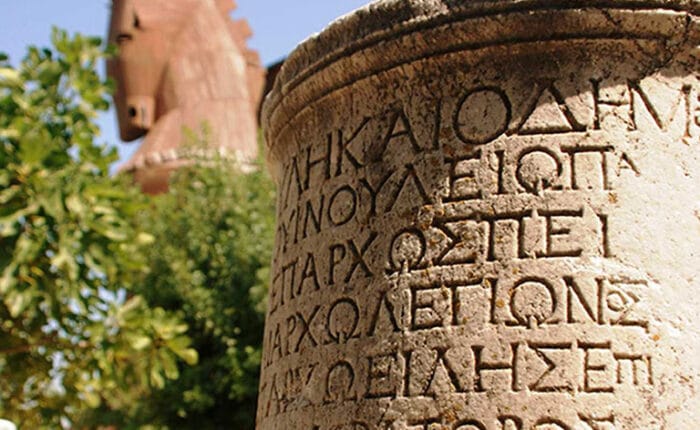
The Late Bronze Age was the golden era of powerful kingdoms with wondrous capitals fortified with pretty strong walls. The city’s strategic location played a significant role in dominating the trade routes from the Black Sea to the Eastern Mediterranean, as it was the key point to access Indian silks and spices. During that time, the trade was carried in multiple exchange systems between cities, including textiles, precious metals, grain and other goods, and even slaves.
Troy VI was an area of 270,000 square meters, and according to the averages of the Bronze Age, that meant 5000 to 10,000 people. Since we don’t know the exact population, though, we can stick to the older methods of the archaeologists and estimate the population was around 3000 to 4000 people.
Apart from the fact that it is still a big debate if it was a myth or reality, these numbers would boost to tens of thousands during the Trojan War, considering it is captioned as “10 years of siege.”
Most of the scholars, including some that worked at the site, believed that the Trojans were originally Greek. However, the excavations carried at the site revealed that the artifacts found that the Trojans were actually locals associated with the Indo-European tribes that migrated to the area.
They were also in good relations with Dardanians (according to Homer), and the archeological studies also support the fact that they shared kinship with the people from Dardania. Considering the ancestors were Luwians, can we say the Trojans were Luwians? Not really. There is no real evidence for that, too, but we can definitely say that Trojans were neither Greek nor Turkish!
Very little is known about how Trojans looked like and what language they spoke. Throughout its 4000 years of history, the Luwians theory, being maybe the strongest thanks to the seals, even does not give us good-enough proofs except for the trade exchanges they had with the Trojans. Also, little to no evidence of depictions on clays, and since cremation was preferred over traditional burials, there are also a few bones that don’t give us a great clue about how they looked like. So, there is not a concrete answer about the origins of Trojans.
Their speech and dialects were all different, as they spoke a mixture of languages—the troops hailed from many parts.
There is also no single evidence for the art of writing till 1100 BCE in Troy. After 1200 BCE, instead, it was a small settlement. So, this will bring the question in mind: was Troy a commercial center? Probably, this will remain a question mark for a long while.
Since organic textile (furs, wool, etc.) were also destroyed quicker than other materials, we don’t have a great knowledge of the dressing style of different classes. However, we can easily assume the jewelry was a big part of their life, including men and children wearing various accessories.
Among those, Priam’s Treasure (currently displayed at Pushkin Museum in Russia), found in the upper section of Troy II by Schliemann, was a perfect cache of gold and other artifacts that convinced the german archeologist this was the Troy of Homer.
Troy was best known for its exquisite pottery and textiles, making the list of the major items exported. The trade was made in a complicated exchange system both by land and sea.
The pottery was all made using local sources, and the style remained the same until the Balkans invaded the city. Naturally, the pottery art was adapted to Balkan style, maybe still by the same artisans or their own potters who developed the existing traditional techniques.
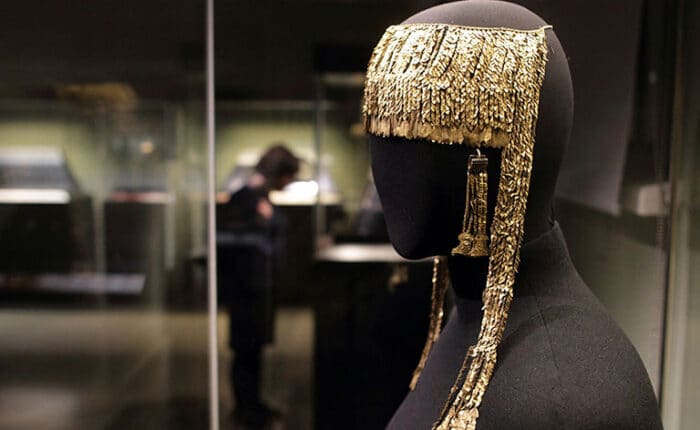
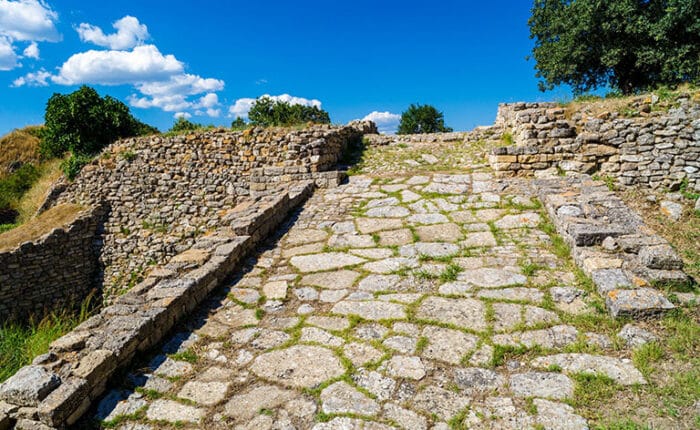

The Karamenderes (Scamandros) River, fed by rain and melting snow from Mt. Ida, is a delta on the Asian side of Bosphorus and flows into the Aegean Sea. According to Homer’s Iliad, there are traces of the Trojan War here in Besik Bay, considered the natural harbor.
While some of the analyses report that the ancient city was by the ocean approximately 5000 years ago, other studies acclaim that it would be impossible to sail back to the sea from these inlets due to strong wind. Thus, the ships had to stay at Besik Bay for days to a week until the strong winds were over, and it was safe to sail again. Once the inlets were turned into swamps over time, the legendary city lost its natural harbor.
Also, unlike some similar settlements with a harbor, like those in the Mediterranean, there were no stone anchors found around Besik Bay. Consequently, it is still a debate if it was a superpower as a harbored city or just played the towering role in controlling the straits.
The Bronze Age pretty much had everything that we all would not complain to eat frequently.
Below is a perfect summary of the most preferred diet of Trojans throughout 4000 years of its history:
Meat: beef, lamb, pork, goat, deer and tuna
Grains: wheat, beans, and lentils
Fruits: grapes, figs, and olives
Trojans enjoyed the beef and shellfish probably more than anything else.
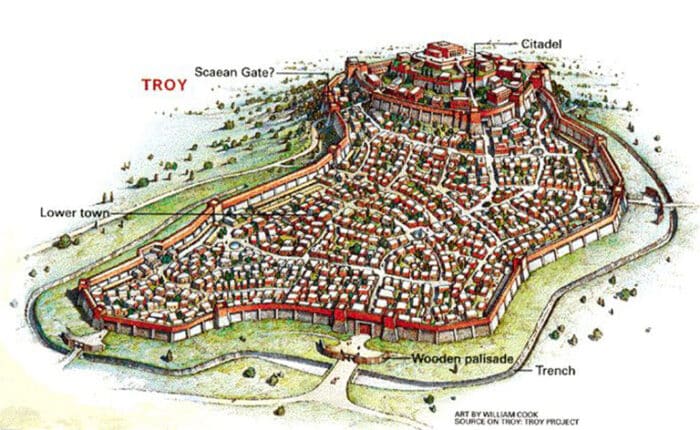

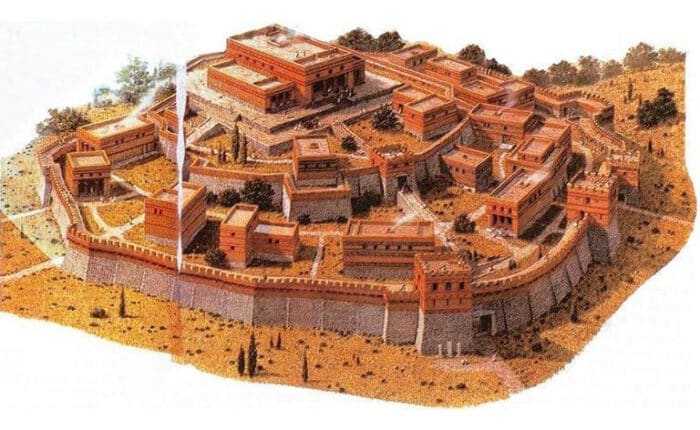
The famous site is comprised of several layers. Starting from 3000 BCE onwards, trace the history of various settlements.
Have you ever found yourself wondering how the streets of this legendary city would be at the height of its glory? Have you ever dreamt of walking in the footsteps of a hero like Alexander the Great and the Greek’s famous philosopher Homer? How about we tell you that there is a way you can enjoy the majesty again?
With some of the best-preserved ruins on earth, taking a private tour around this site is an experience, but only with an expert guide. View our tours and let us know if you would like to customize your trip to this land of legendary.
Since Troy is located in the northwest of the country, you can enjoy a similar chronology down to Assos and, further down, the magnificent ancient cities such as Izmir, Ephesus, Sagalassos, Bodrum, to name a few.